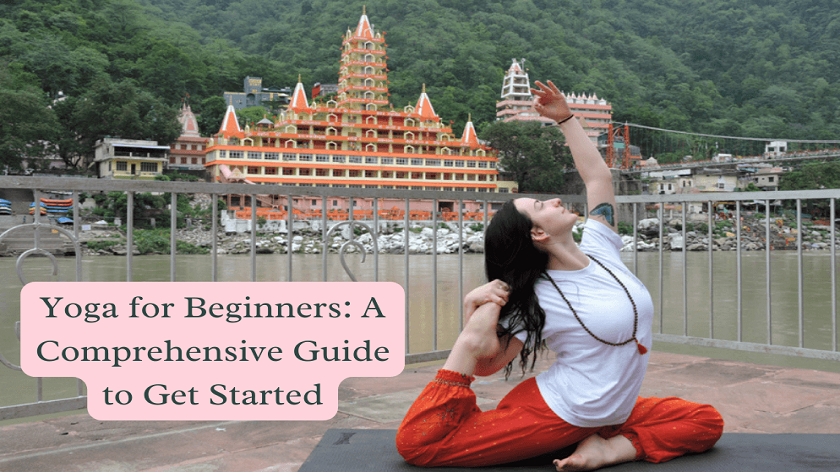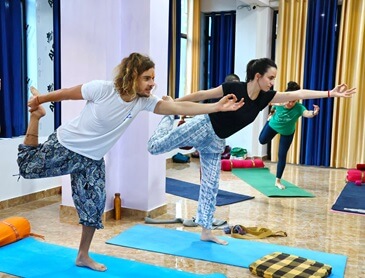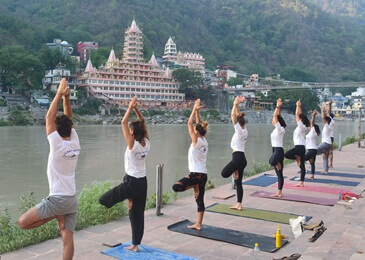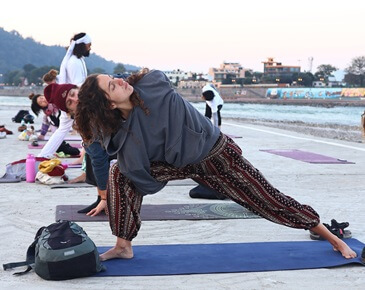
07 Mar 2023
Yoga for Beginners: A Comprehensive Guide to Get Started
Yoga is a practice that has been around for thousands of years and has proven to be a beneficial form of physical and mental exercise for people of all ages and fitness levels. Whether you are new to yoga or have been considering trying it for a while, this comprehensive guide will provide you with all the information you need to get started.
What is Yoga?
Yoga is an ancient Indian tradition that combines physical postures, breathing techniques, and meditation to improve mental and physical health. It is a holistic approach to wellness that emphasizes the mind-body connection and helps to create balance and peace in the body and mind.
Benefits of Yoga
There are numerous benefits to practicing yoga, including improved physical fitness, stress relief, and increased flexibility and balance. Here are just a few of the benefits of practicing yoga:
Improved physical fitness: Yoga is a form of low-impact exercise that can improve cardiovascular health, increase strength and flexibility, and improve posture.
Stress relief: Yoga has been shown to reduce stress levels by slowing down the heart rate and calming the mind. The deep breathing and meditation techniques used in yoga can also help to relieve stress and anxiety.
Increased flexibility and balance:Regular yoga practice can help to improve flexibility and balance, which can reduce the risk of injury and improve overall mobility.
Better mental health:Yoga has been shown to improve mood and reduce symptoms of depression and anxiety. The deep breathing and meditation techniques used in yoga can also help to improve focus and concentration.
Getting Started with Yoga
If you are new to yoga, it is important to start slowly and gradually build up your practice. Here are some tips to help you get started:
Choose a beginner-friendly class: Look for a beginner-friendly yoga class that is specifically designed for people who are new to yoga. These classes will usually be taught at a slower pace and will provide modifications for different abilities.
Invest in the right equipment: Yoga is typically practiced in bare feet, so you will need a comfortable pair of yoga pants or shorts and a yoga mat. You may also want to invest in a yoga block and strap, which can help you to deepen your stretches and maintain balance.
Listen to your body: Yoga is a low-impact form of exercise, but it is still important to listen to your body and respect its limits. If you experience pain or discomfort, stop and modify the pose as needed.
Find a quiet place to practice: Yoga is best practiced in a quiet, peaceful environment where you can focus on your breathing and movements. If you are practicing at home, try to find a quiet room where you can set up your mat and practice in peace.
Getting Started with Yoga
If you are new to yoga, it is important to start slowly and gradually build up your practice. Here are some tips to help you get started:
Choose a beginner-friendly class: Look for a beginner-friendly yoga class that is specifically designed for people who are new to yoga. These classes will usually be taught at a slower pace and will provide modifications for different abilities.
Invest in the right equipment: Yoga is typically practiced in bare feet, so you will need a comfortable pair of yoga pants or shorts and a yoga mat. You may also want to invest in a yoga block and strap, which can help you to deepen your stretches and maintain balance.
Listen to your body: Yoga is a low-impact form of exercise, but it is still important to listen to your body and respect its limits. If you experience pain or discomfort, stop and modify the pose as needed.
Find a quiet place to practice: Yoga is best practiced in a quiet, peaceful environment where you can focus on your breathing and movements. If you are practicing at home, try to find a quiet room where you can set up your mat and practice in peace.
Practice regularly: To see the benefits of yoga, it is important to practice regularly. Aim to practice at least three times per week for the best results.
Yoga is a wonderful form of physical and mental exercise that can offer numerous benefits to people of all ages and fitness levels. Whether you are new to yoga or have been considering trying it for a while, this comprehensive guide provides you with all the information you need to get started. So, why not give yoga a try today and experience the many benefits it has to offer?
Different Types of Yoga
There are many different styles of yoga, each with its own unique focus, benefits, and level of intensity. Some of the most popular types of yoga include:
Hatha Yoga: This is a gentle and slow-paced style of yoga that is great for beginners. It focuses on holding postures for several breaths and is ideal for improving balance, flexibility, and strength.
Vinyasa Yoga: This is a more dynamic style of yoga that involves flowing through a series of postures in coordination with your breath. It's a great workout and can help to increase your heart rate and build cardiovascular endurance.
Iyengar Yoga: This style of yoga places a strong emphasis on proper alignment and using props such as blocks, straps, and blankets to support the body in each posture. It's a great choice for those with injuries or limitations, and for anyone looking to deepen their understanding of yoga.
Bikram Yoga: This is a hot yoga practice that is performed in a room heated to 105°F with 40% humidity. It's a physically demanding practice that is designed to cleanse the body and build strength, flexibility, and balance.
Restorative Yoga: This is a gentle and calming style of yoga that uses props such as blankets, blocks, and bolsters to support the body in relaxing postures. It's ideal for those looking to reduce stress and anxiety, or for anyone recovering from injury.
What to Expect from a Yoga Class
A typical yoga class will begin with a few moments of quiet meditation or breathing exercises to help you center yourself and prepare for the physical practice ahead. From there, you'll move through a series of postures that may include standing, seated, or prone positions.
In between each posture, you'll be guided to breathe deeply and mindfully, which is an important aspect of yoga practice. In some styles of yoga, such as Vinyasa Yoga, the pace will be brisk, and you'll move quickly from one posture to the next. In other styles, such as Hatha Yoga, the pace will be slower, and you'll hold each posture for several breaths.
Regardless of the style of yoga you choose, the focus will be on connecting with your breath, moving with intention, and being present at the moment. You'll be encouraged to listen to your body and move at your own pace, and you'll never be asked to push yourself beyond your limits.


